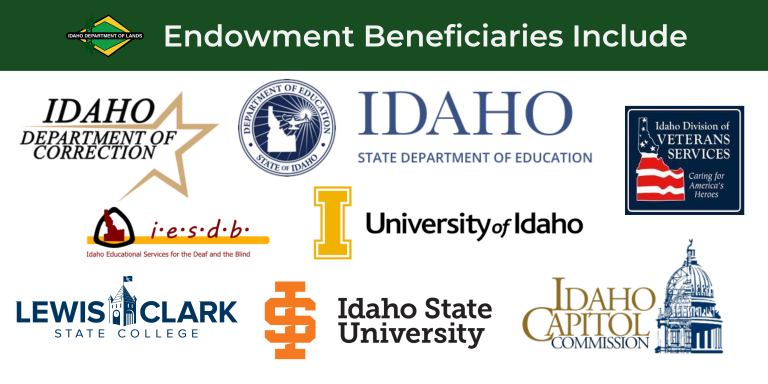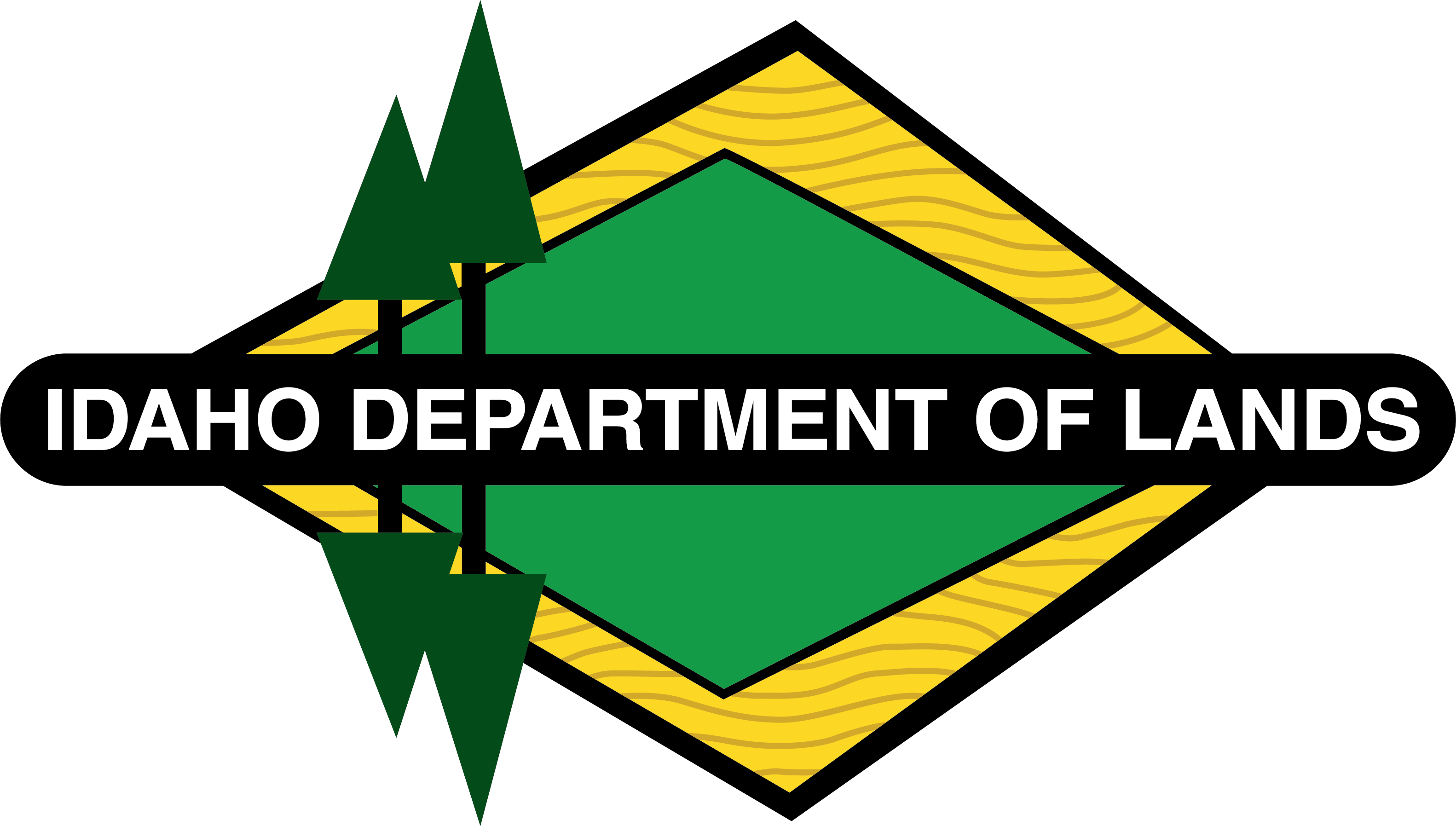Benefits
If you went to public school in Idaho, endowment lands helped fund your education. Those lands are funding schools today, and vital public services provided by eight other beneficiaries. If you pay taxes in Idaho, the amount is decreased because of endowment land revenue. If you or someone you know works in the timber industry, those workers – as well as the greater economy – have benefited from endowment lands. Many people also enjoy managed camping and trail use on these lands.
Idaho’s constitution charges the State Board of Land Commissioners with managing the endowment lands for the beneficiaries. The Board delegates its stewardship and daily management responsibilities to the Idaho Department of Lands.
Table of Contents
History
When Idaho became a state, Congress granted Idaho endowment trust land for the sole purpose of funding specified beneficiaries, which are largely public schools. Idaho’s original land grant included 3,650,763 acres. Since then, ownership has been consolidated and some land has been sold, with the proceeds reinvested. This land forms the core of a perpetual trust, with the land generating revenue for nine endowment beneficiaries forever. There are now nearly 2.5 million acres of Endowment Land in Idaho.


